REPUBLICAN WORKSHOP FOR WATER LEADERS OF UZBEKISTAN
On 29-30 May, 2015, the Republican Workshop for Water Leaders of Uzbekistan (BISAs, ISAs, operating departments, etc.) was co-organized in the Kashkadarya province by the National Fund for Land Reclamation under the Ministry of Finance. The workshop was attended by staff of several projects supported by the international donors (WB, SDC, GIZ, GWP CACENA) and of the Institute of Water Problems and Irrigation under the Tashkent Institute of Irrigation and Melioration (TIIM). Totally, more than 80 leading specialists of water sector of Uzbekistan participated in the workshop
Khamraev Sh.R., Deputy Minister of Agriculture and Water Resources, Head of the Central Water Administration of Uzbekistan coordinated the workshop. The main points on the agenda were aimed at water governance, application of water-saving technologies, repair and rehabilitation of irrigation and reclamation facilities, and strengthening of water user associations.
The workshop was opened in the evening of May 29 in the Amu-Kashkadarya Irrigation System Basin Authority in Karshi city. Early in the morning (at 5 o’clock) the participants were treated with the Uzbek national meal - pilav. During this business breakfast, Zafar Ruziev, Khokim (governor) of the Kashkadarya province made a brief review of the issues and achievements in the water sector and agriculture.
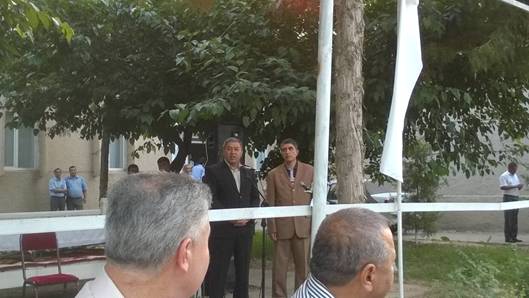
The welcoming speech of Zafar Ruziev, Khokim of the province, and Shavkat Khamraev,
Deputy Minister of Agriculture and Water Resources
The Kashkadarya province is located in the Southern part of Uzbekistan in the Kashkadarya River Basin on the western side of the Pamir-Alay Mountains. The population is 2,723,900 (2011). The economy of the province is focused on agriculture. The share of agricultural production in Gross Regional Product is over 27.3%. Gross value of agricultural production in the province is UZS 1,329.7 billion ($791.5 million).
Natural and climatic conditions of the region are characterized by higher average annual temperature than in other regions. Long duration of warm season and fertile soil give opportunity to produce warm-season subtropical crops, such as late fine-stapled varieties of cotton, date-plum and sugar cane. Favorable climatic conditions and irrigation system in the Kashkadarya province allow producing from two to three harvests a year.
The Kashkadarya province is the main breadbasket of grain in Uzbekistan, manufacturer of cotton and other agricultural products. This is evident from the fact that the province accounts for 10.2% of total agricultural production in the country, more than 10% of cotton, 11% of grain and 19% of karakul.
The major branches of agricultural production are fine-stapled cotton growing and great and small cattle breeding.
The total area of the province is 2,857,000 ha, of which 1,381,000 ha are pastures. The province has 1 million ha of land, which is suitable for irrigation.
Natural conditions in the province are favorable for growing grapes, stone fruit trees, fig trees and pomegranate. Karshi grapes, especially the “Maska” variety, are famous for their taste. In addition to cotton growing, silkworm breeding is practiced in the province. The province is one of the leaders in karakul sheep raising. Expansion of grazing and increase of maize and alfalfa production contribute to further development of animal breeding.
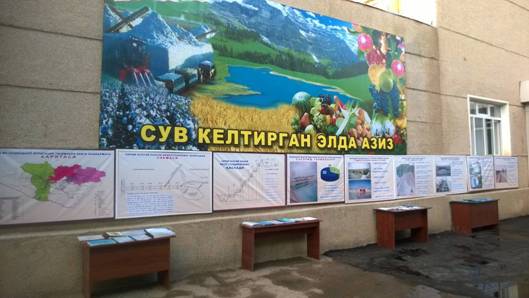
Demonstration materials for the participants of the workshop
in the yard of Amu-Kashkadarya BISA
Early in the morning on May 30, the participants left to the Talimarjan reservoir at the border with Turkmenistan. On their way the participants stopped over in the Karshi district to visit a site with drip irrigation of cotton in the “Najotkor zamin hosiloti” farm. As it was shown, drip irrigation allowed the farmer to reduce irrigation norm from 6,600 m3/ha to 3,300 m3/ha, i.e. twice less. In doing so, cotton yield rose by 30%. Fertilizers are applied more affectively and evenly owing to drip irrigation system. However, the participant noted the fact that application of this technology for cotton was not repaid. The farmer has to cover expenses through growing of other crops that are more profitable. Nevertheless, these efforts are worthwhile in light of water deficit.
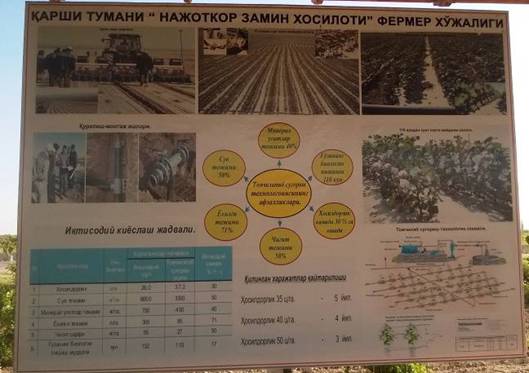
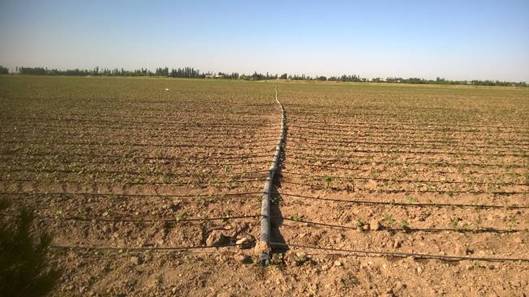
Drip irrigation system for cotton in Karshi district
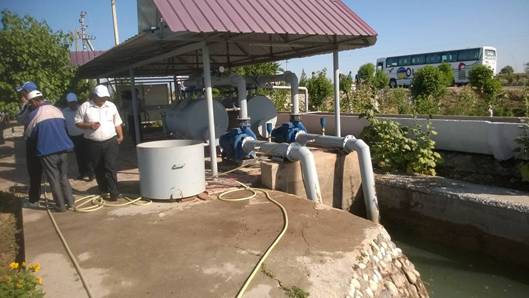
Pumping and filtering equipment for drip irrigation system
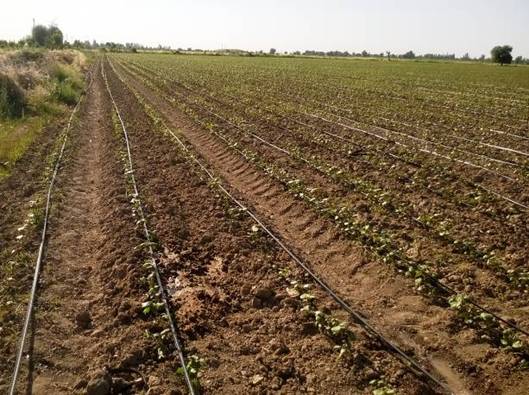
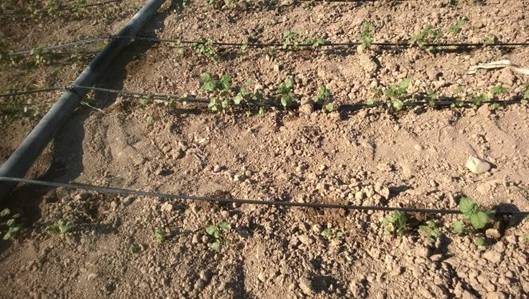
Drip irrigation system for cotton
The participants also paid attention to perfect conditions of ditches in the Karshi province.
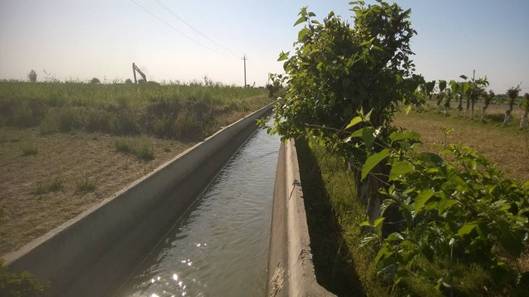
Ditches are effectively operated after routine repair and maintenance
almost throughout the Kashkadarya province
During the next stop the participants were introduced with equipment, which is produced and sold by the “Uzmeliomashlizing” company, which was specially established under the Reclamation Fund. Samples of technical equipment were presented with demonstration of their technical characteristics, price and purchase terms.
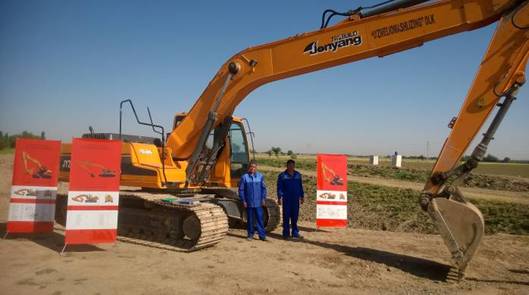
Presentation of equipment purchased by “Uzmeliomashlizing”
under the Reclamation Fund
The participants of the seminar visited the Mirishkor Canal Authority. The functioning management information system for water allocation along the canal (developed in 2010-2011 by the “RESP-2” project with the assistance of SIC ICWC) was demonstrated.
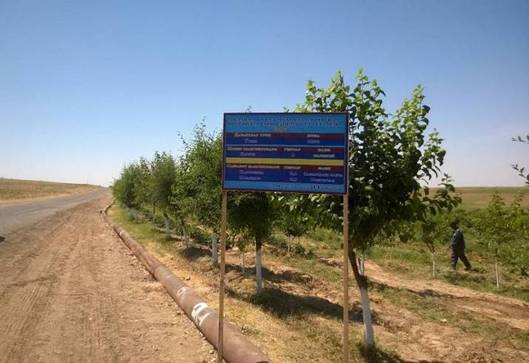
Water is life. The photo shows dead steppe to the left of the road
and blossoming garden to the right, where water
was delivered artificially
The morning was ended with the visit to pumping station ¹ 7 of the Karshi main canal cascade.
There the participants were introduced with the pumping station itself and visited the Talimarjan reservoir. The general information about the conditions of the Karshi main canal and operation of this complex and unique water system was presented.
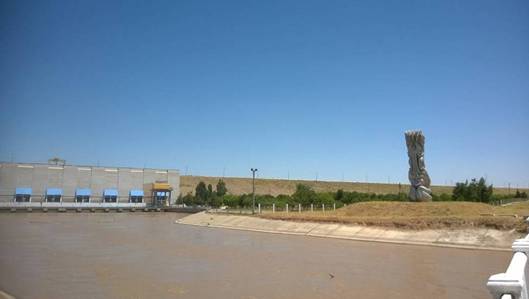
Pumping station ¹ 7 at the Karshi main canal.
The dam of the Talimarjan reservoir can be seen upstream
In the afternoon the participants left the south-west of the Kashkadarya province to the north-west – to Gissarak the hydroscheme. In the Nishan district the participants visited the demonstration plot with hydrometric equipment, which is used to train farmers in water accounting. In addition, the experiment of cotton alternate furrow irrigation under black film was shown. This technology allows reducing irrigation norm by 40% and increasing crop yield by 25%.

Training unit at farm level in the Nishan district
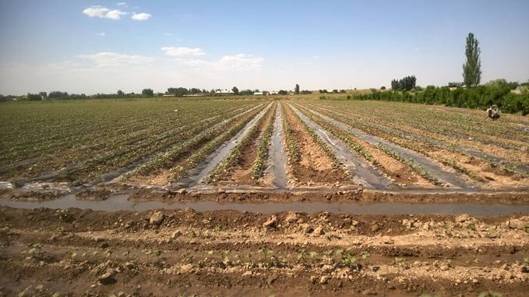
Alternate furrow irrigation of cotton under black film in the Nishan district
Then, on the territory of the Kamashin district the participants were accompanied by Rashid Mammadiev, Khokim of the district and holder of the “Dustlik” order. He told about problems and achievements in irrigation and water sector. As the Khokim reported, the district expects a record-breaking yield of winter wheat in 2015 – 82 centner/ha on average.
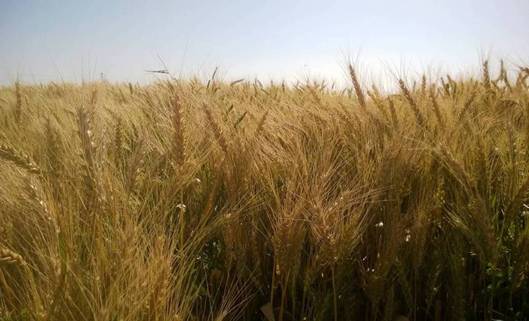
Wheat in Kashkadarya
The participants visited the Kamashin reservoir, where they became acquainted with operation of the set of facilities, as well as fish production in special ponds.
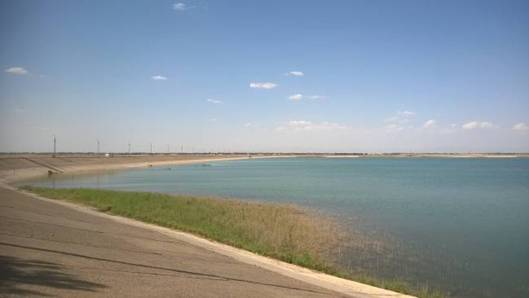
Kamashin reservoir along the Kashkadarya’s tributary – Yakkabagdarya River
Total volume – 25 Mm3
The workshop ended in the Gissarak hydroscheme on the Aksu River. Gissarak HEPS was launched in 2011. HEPS is built near the Gissarak hydroscheme dam, which was constructed in 1988 for accumulation of water for irrigation. It operates through irrigation releases from the reservoir.
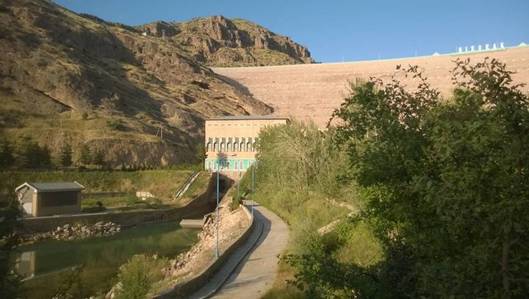
Gissarak HEPS
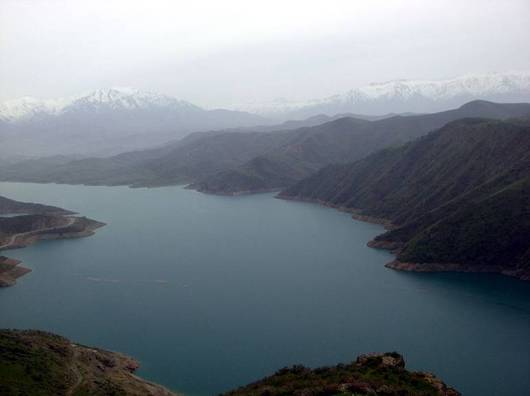
HEPS dam forms the Gissarak reservoir for seasonal flow regulation
with the total volume of 170 Mm3 and available capacity of 162 Mm3
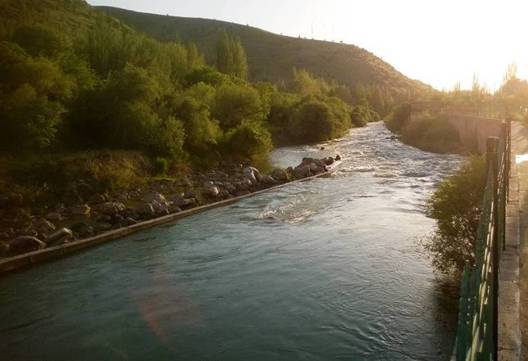
Diversion canal in tail race of the Gissarak hydroscheme
Deputy Head of SIC ICWC Sokolov V.I.
Photo by the author
|